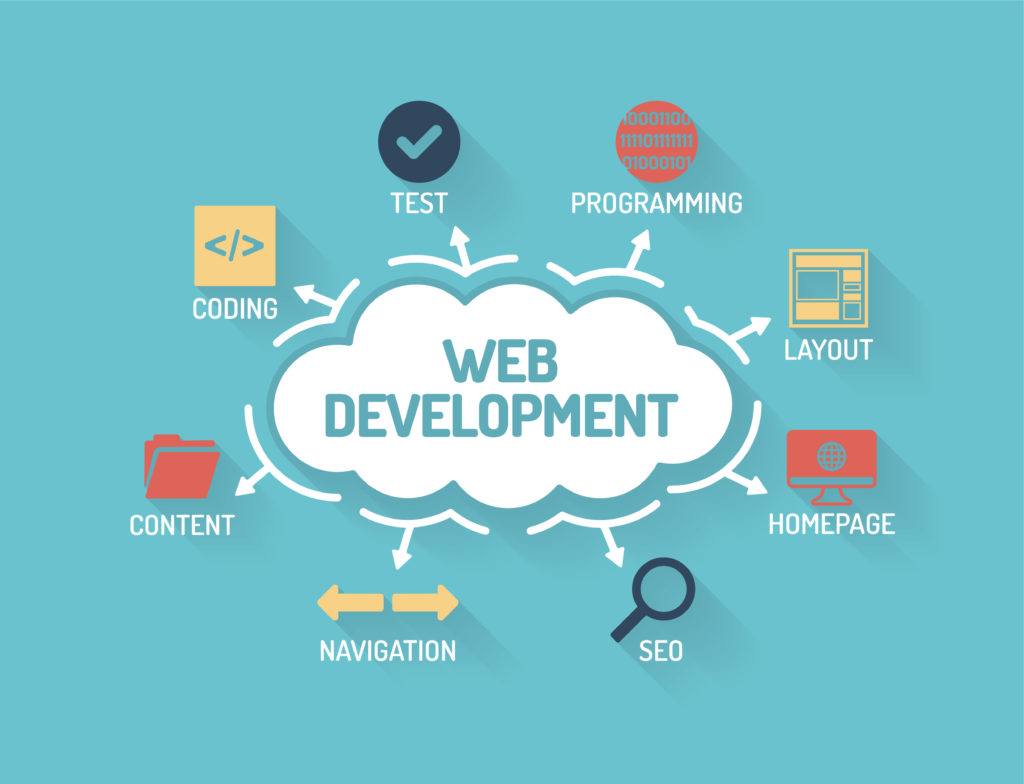
1. Single-page applications
The first trend that we’ve included on our list is the direct consequence of users’ behavior when they browse. The first quarter in 2021 54.8 percent of all web traffic in the world was generated via mobile devices. Although the transition away from desktops is not new, it serves to remind us that developing and designing for mobile should be a the top spot.
Nowadays, users are obsessed with speed and efficiency, and that’s precisely the kind of website that is single-page. The name itself suggests that they are essentially one web page. There’s no traditional menu nor complicated navigation system. Instead the page is split into sections that are logical. Users need move down the page in a continuous movement as well as click the anchor link to move to the proper section.
One excellent (and delicious) illustration of single-page design at work could be an example of single-page design in action is the KitKat site. Scrolling down the page is an experience in itself each new component effortlessly unfolding to tell an engaging story.
From a perspective of the user, SPAs look good on every device, and are user-friendly (the smartphone user’s ideal) They can even improve conversion rates. But, just like with any design trend, it’s essential to think about the particular needs of each site before deciding if this style is the most appropriate choice.
2. Web apps that are progressive
We’re once again seeing the influence of mobile devices in this latest trend: the growth of web-based apps that are progressive.
Progressive web applications look and operate like mobile apps however, they are actually web pages which function within the browser. As Google says, PWAs combine the best of bothworlds “They can be useful to users starting from the first moment they open within a browser tab and require no installation. As users build an association with the app over time, the app becomes ever more effective. It is fast to load even on unstable networks, provides appropriate push notification, features an icon that appears on the home screen and loads as a top-level full-screen experience.”
In addition to re-creating the popular mobile app experience within your browser PWAs have many benefits. They are able to be used offline, are immersive and entertaining and load very quickly because the majority of information will be saved in the cache. In contrast to mobile apps, they are found online through search and do not require installation.
To create a web application that is progressive it is necessary to have a basic understanding about HTML, CSS and JavaScript. This is the same as an ordinary web application. The concept of progressive is built upon the concept of service workers that allow users to create an immersive offline experience, and also to integrate features like push notification and the manifest of the web app which allows users to install the app on their home screen. The Google Codelab will guide you through the steps.
3. Artificial intelligence
It’s almost as if the AI hype doesn’t stop However, it wouldn’t be a trend list if we didn’t include chatbots. The last year has taught us once again how essential automation is in all sectors and chatbots are often being the most prominent illustration.
In the world of constant connectivity, the expectations of users are rising. The traditional customer service of 9-5 does not meet the demands of today’s customers as we expect 24/7 access to help and information and that’s the area where chatbots are a must. They have swiftly become the standard and the Covid-19 scandal increasing their use until they are featured on the majority of businesses’ websites. They have morphed quickly from customer support to an important communication marketing instrument (with Instagram automated messaging being a popular 2022 trend) Web developers today have to be comfortable using the technologies behind these tools.
This will require a thorough understanding on Natural Language Processing, Natural Language Understanding and Artificial Intelligence principles. Interactions based on context are expected to play an important part, and the emphasis shifts to real-time interactions instead of traditional user interfaces. The Developer’s Guide to Chatbots will give you a solid introduction to the appropriate frameworks and platforms.
4. Voice technology for search
“But voice recognition tech has been around for over decade!” We can hear you arguing. It appears that by 2022 however, the technology is really picking up speed.
Although the rate of adoption was lower than what was expected previously, in last year, there are around 157 million speakers installed in American homes. This isn’t just people asking Siri or Alexa for weather information as well as to stream some tunes. Consumer spending on voice assistants is expected to reach 18% in the coming year and revenues will reach $19 billion.
Beyond e-commerce, the use of the use of voice interfaces is growing quickly, and the demand for developers with a voice (as and UI designers using Voice User Interface) increasing too. We’ve covered the steps you need to take to could become a designer of the voice interface However, future web developers should consider at ways to optimize each app they create to make use of voice search and navigation particularly for mobile applications.
5. Push notifications from websites
Push notifications aren’t just for mobile applications. Websites too are taking advantage of this tool for engagement with users and it’s something we’ll be seeing growing and more frequently throughout 2022.
Similar to chatbots, companies are always looking for ways to connect with users and offer important information at the right time. So long as users are able to receive notifications and is able to receive helpful notifications even if they don’t have the website running.
Contact For More Info : Afro Digico Limited
